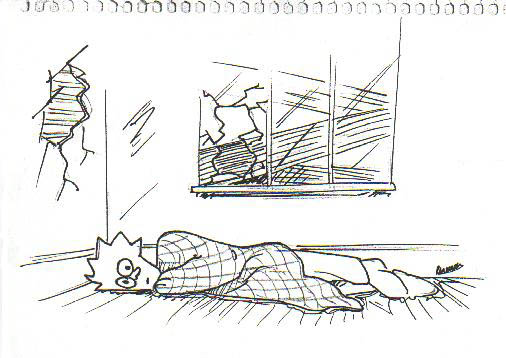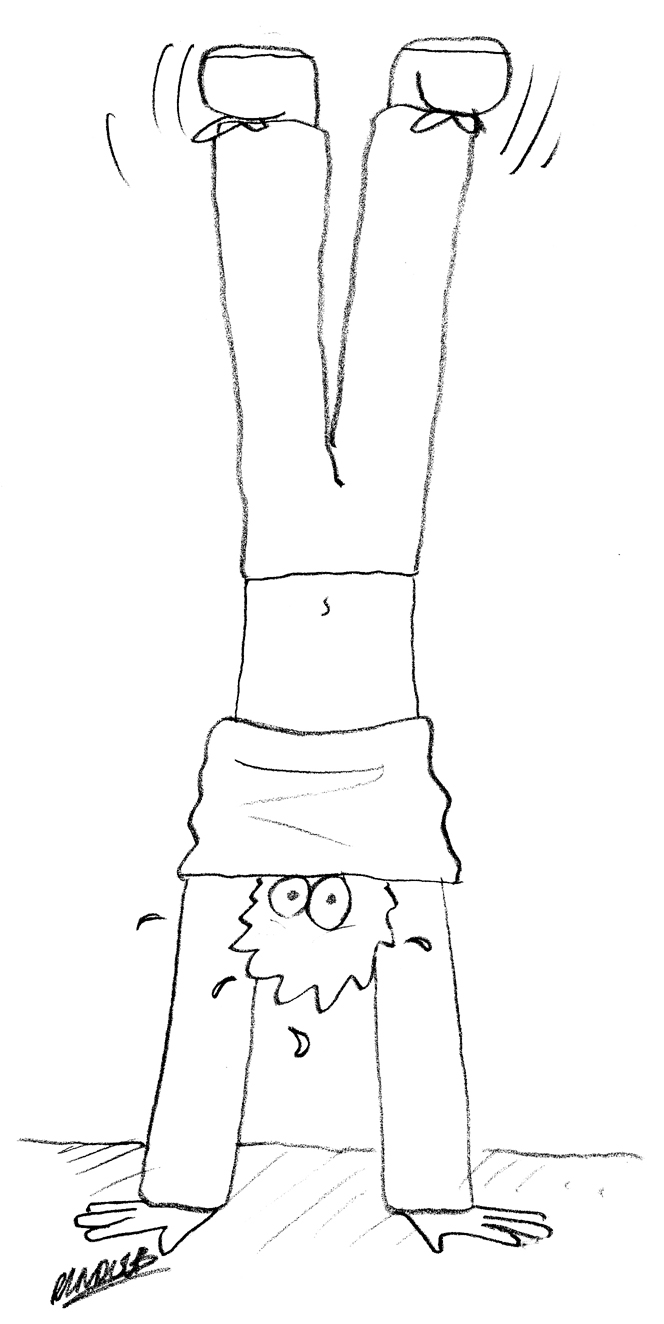As the popularity of this column increases, I’m starting to get mail from readers who are becoming very eager positioners. While the rolling constant of new positions must continue, I’m getting many requests from people still lying down, all the eager petitioners want to know how to get up again. So here I bring you not only a transitional position to aid you in your quest for verticality but also a damn useful position in it’s own right.

From lying down you must simply raise your body weight, elevating your feet so they’re flat on the floor. Then pushing up with your arms, put your legs into a compact bent/folded shape and aim your torso vertically. You’ve got it, now to stand up you just have to straighten your legs. The entire movement into and through this position uses a very broad range of muscles and can be very good as an exercise. Exercise is not our direct concern though so lets not get side tracked – we want positions, good quality positions. The reason I highlight muscle usage here is mainly for health and safety, and fulfilling my moral responsibilities as a position tutor. Besides the last thing anybody wants is to get injured and have to take time out from intensive position practice. Again I find myself fear-mongering but safety should always come first, once you get the hang of it you will find that squatting is very simple really.
It has many applications in everyday life. Most obviously, picking things up can be achieved very well with the use of squatting. It is the best way to begin really, especially if the objects are heavy – but we’ll get to manual handling later in the course so don’t be hasty. Many find squatting to be an appealing position when assessing situations visually from a lower angle – you may have seen this used by golfers. Others find it to be a contemplative position but it’s applications as ever are wide and varied. I’m sure you will find a convenient place for squatting in your life. I quite often find that I need to use it in certain emergencies but I won’t go into that.
Now we’ve covered what many consider to be the five basic positions of manoeuvring we can move onto the really tricky stuff next time.




